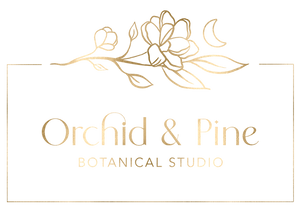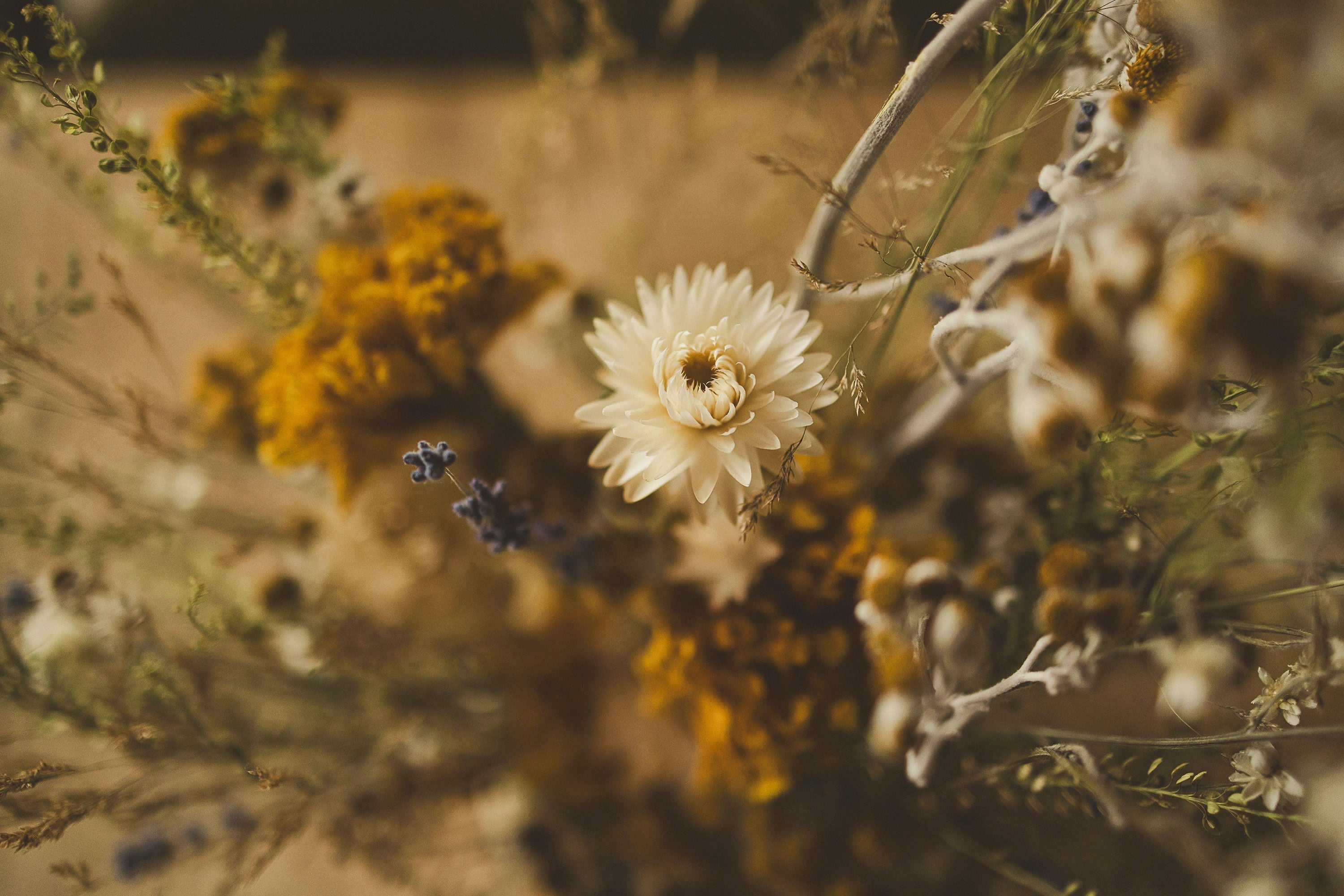The Three Most Common Questions
When people ask me about Orchid & Pine’s dried floral Earth Vessels and gifts, three questions come up most often:
- Are they real?
- Do you spray or treat them to make them so bright?
- How long will they last?
My answer is always the same: Yes, they are real. Yes, they are natural. But no, they're not treated with anything or preserved.
Many people use the terms "dried" and "preserved" interchangeably, but in reality, they are vastly different. Naturally dried flowers, when kept in the right conditions, can last anywhere from six months to a couple of years—sometimes even longer. Our Earth Vessels, protected within glass, are especially long-lasting, as they’re shielded from dust, dirt, and environmental elements.
In this journal post, I want to open a conversation about preserved flowers—what they are, why they’ve become so widespread, and the concerns that come with them.
My hope is that, from a place of kindness and awareness, this sheds light on an issue that many may not have considered before.
A Defining Moment
When I first started working with flowers, I adored them all. My journey with Orchid & Pine began with our first product: the Earth Vessel—our take on floral herbariums, which we lovingly call “love notes in a bottle.”
At the time, I sourced flowers from a regional supplier and was thrilled to have access to such a wide variety of blooms. Ethical sourcing has always been a core value of mine, so I wanted to see firsthand where these flowers were coming from.
What I discovered was deeply disheartening.
I quickly realized that most of the flowers I had been ordering were imported from Asia. Then, one shipment arrived damaged due to weather changes, causing the preservative chemicals to separate—distorting the flowers' colors and altering their appearance completely. And the smell—let’s just say that when I opened that box, the fumes were overwhelming and far from natural.
At that moment, I made a firm decision:
It’s important to me that my team and our customers can handle our bouquets safely, without exposure to harmful substances.

To support this mission, I would grow as many of our own flowers as possible and source only from farms that naturally dry their blooms—completely free of chemicals and preservatives.
Dried vs. Preserved Flowers: What’s the Difference?
At first glance, naturally dried flowers and preserved flowers may seem similar—they both extend the life of blooms beyond their fresh-cut state. However, the difference between them is significant, from how they are processed to their environmental impact and even how they feel to the touch.
Naturally Dried Flowers
Naturally dried flowers are exactly as they sound—flowers that have been dried using time, air, and patience.
This can happen through simple methods like:
- Hanging them upside down
- Pressing them
- Allowing them to dry naturally in a vase
Some flowers, like strawflowers, statice, and globe amaranth, retain their color and structure beautifully without any intervention. Others, like roses or hydrangeas, take on softer, muted hues as they dry, reflecting the natural aging process of organic materials.
Because no chemicals are used, dried flowers are:
✅ Completely natural and biodegradable
✅ Safe to handle (no toxic residues!)
✅ Unique in their beauty—each bloom dries in its own way
✅ A sustainable alternative to imported flowers
When sourced from local gardens and farms, dried flowers also support sustainable farming practices and reduce the carbon footprint associated with mass imports.
Preserved Flowers
Preserved flowers, on the other hand, undergo a chemical treatment to maintain a soft, fresh-like appearance indefinitely. These treatments typically involve:
- Bleaching – Stripping the flower of its natural pigment to create a blank slate for artificial coloring.
- Dyeing – Synthetically coloring flowers in unnatural shades that don’t occur in nature.
- Glycerin Preservation – Replacing the flower’s natural moisture with a chemical solution to keep it from drying out completely.
- Other Chemical Treatments – Some flowers are coated with synthetic waxes or sprayed with fixatives to maintain a certain texture or appearance.
These processes remove the natural essence of the flower, replacing it with an artificial version that looks “perfect” but lacks the authenticity of a truly dried bloom.
⚠️ Health Risks & Environmental Impact
- Preserved flowers often release toxic fumes—something you may notice when opening a box of imported, preserved florals.
- Many preserved flowers are not biodegradable, meaning they contribute to waste and pollution.
- They require significant energy and chemical processing, making them far less sustainable than naturally dried flowers.
Why This Matters
The rise in popularity of preserved flowers is largely driven by aesthetics—people want flowers that look "fresh" indefinitely, without realizing the environmental and health trade-offs.
While naturally dried flowers are beloved by many, chemically preserved flowers—those that are bleached, synthetically dyed, altered, and imported—have unfortunately become far more prevalent.
They are everywhere:
- Filling boutique displays
- Gracing storefront windows
- Lining checkout counters
- Adorning reception desks and restaurant tables
- Stocked in home décor stores, flower shops, and online retailers
- Showcased by floral designers, shopkeepers, wedding florists, and interior stylists across social media
This widespread availability makes preserved flowers seem like the gold standard in dried florals, when in reality, they are just another industry trend with hidden consequences.
A More Sustainable Choice
Naturally dried flowers offer a more sustainable, safe, and authentic alternative. They encourage a deeper appreciation for nature as it is—seasonal, ever-changing, and beautifully imperfect.
By choosing naturally dried flowers, we:
🌿 Support ethical, local farms
🌿 Reduce our environmental footprint
🌿 Protect ourselves from unnecessary chemical exposure
🌿 Celebrate nature’s beauty in its most authentic form
At Orchid & Pine, we believe in honoring flowers as they are—dried by time, shaped by nature, and cherished for their natural beauty.
Because flowers, in their purest form, are already enough.

Final Thoughts
It’s easy to get caught up in trends, but when it comes to flowers, we have a choice. We can choose to support sustainability, safety, and authenticity over convenience and mass production.
I hope this journal post has helped shed some light on the differences between dried and preserved flowers—and why the distinction matters. If you’ve never considered this before, I encourage you to take a closer look at the flowers in your space and think about where they came from.
Because sometimes, the simplest choice—choosing nature, just as it is—is the most meaningful one.
💛 With gratitude,
Charina

